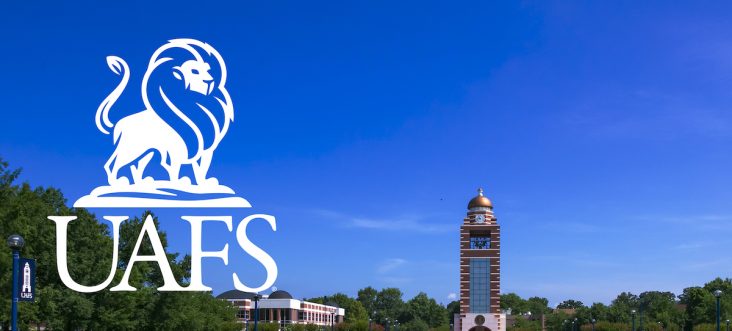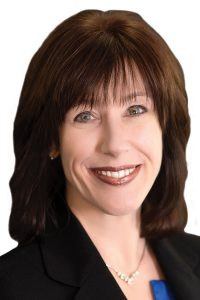UAFS strategic plan work to include student access to better paying jobs
by December 7, 2022 5:22 pm 711 views

As the University of Arkansas at Fort Smith’s strategic plan ends, the university is planning for the next five years. UAFS Chancellor Dr. Terisa Riley on Wednesday (Dec. 7) noted strategic plan successes and updated the UAFS Board of Visitors on efforts to draft a new plan for 2023 through 2028.
“There is no strategic plan that a university conceives that is rocket science. There is nothing secretive about it. Almost all contain the items that our plan currently contains,” Riley said during the board’s regular meeting. “The new plan won’t be that different. It’s ultimately going to focus on how do we educate more people?”
Riley said the key is how UAFS gets students the credentials that they need in order to be career ready and able to help, inform and change the communities they are in.
“That’s the critical thing that higher education provides, right?,” Riley said. “Workforce productivity – making sure that every student doesn’t just leave with an education, but also that they are career ready. Students need to leave with education and skills and experiences we expect them to have to be ready for the jobs for which they are applying.”
The strategic plan the university put into place for 2017-2022 had four strategic initiatives:
• Increase the enrollment, retention, and graduation rates of UAFS students;
• Provide an innovative and holistic educational experience for students with a focus on academic opportunities supporting economic growth and development;
• Increase workplace productivity, collaboration and innovation by fostering and championing professional growth and development for university faculty and staff; and
• Strategically align resources to support university objectives.
Riley said the university has experienced success by creating an enrollment management strategic plan to diversity enrollment and increase the number of degrees and certificates awarded.
“We have seen some downturn in our transfer student enrollment. We certainly want to increase that,” Riley said. “Our first-year student enrollment was up this fall, and we expect that again next fall. We have a lot of strategies around that and tactics that are being worked on around that.”

Other successes include, new branding and marketing to more cohesively communicate university messages and the UAFS story as well as new websites. She said the website will continue to be updated so it provides new information and content in order for people to know what the university has to offer and have a realistic view of how it is offered.
“They will see degree options that will show starting salaries in those areas. They’ll also learn more from graduates of those programs in the future,” Riley said. “We don’t want to invest in a platform and not have it used to its full potential.”
Under the ending strategic plan, UAFS has made investment in people through consistent salary increases and/or absorbing benefit increases, the Lion Leadership program, faculty mini-grants, technology and more, Riley said.
“We want to retain great people. It costs a lot more for me to attract new people than it does to try to retain the people we have who are excellent and dedicated to the mission of this institution,” she said.
SUCCESSES, NEW PLAN
UAFS has also seen success in the creation of the UAFS Center for Economic Development, which Riley said is a “tremendous opportunity for (the) campus to engage (the) downtown area and provide a place where people can learn all about entrepreneurship, leadership and the grit it takes to start a business or maintain a family business.” She said one of their goals in the near future is to host an International Family Enterprise Conference in Fort Smith.
The university has also seen success in the expansion of workforce and career readiness programs.
“We have been so extraordinarily lucky to partner with all the school districts in our region to help students to be credentialed in high school. This helps them to not go into debt in order to achieve those credentials, get out earlier, hopefully to earn money and then potentially come back for a four-year degree. That is really happening in some demographics as we expand our offerings through the Peak Innovation Center with Fort Smith Public Schools,” Riley said.
In order to prepare a new strategic plan, UAFS, in partnership with the UAFS Foundation, hired Tampa, Fla.-based MGT of America Consulting for $142,479. MGT is to provide the role and scope of documents for the strategic plan; draft timelines; facilitate analysis, environmental scans and mission/vision/values discussions; work with the strategic planning committee to draft plan goals, and facilitate departmental planning.
A Mission, Vision, and Values open forum was held in early fall. Feedback showed that participants thought the university’s mission statement is generic, overly broad and outdated, not referencing student success or public mission as newer mission statements do. The vision statement also needs work, according to the feedback, and the university’s values need to include integrity/ethics, service to the community and discovery.
Riley said the next strategic plan should include changes to mission, vision, and values to fully reflect commitment to the success and timely completion of a diverse student body as well as
investment in those who educate and support them.
‘SOCIAL MOBILITY’ ISSUE
Findings from the environmental scan of peer and aspirational peer institutions, also need to be considered when drafting the university’s new strategy. The environmental study looked at demographics, economic overview and college enrollment pipelines. It found that the top three industries in Fort Smith are manufacturing, health care and government. The average pay for manufacturing jobs with a bachelor’s degree is $64,675 and the average health care job pay with a bachelor’s degree is $64,762, the report shows.
“In Fort Smith, the median household income is $44,000, but these industries are paying $20,000 more than that. The more people we can get in these industries at these higher salaries, well, … it changes the social mobility in this community. People are able to afford to buy homes, to pay taxes, to give to the nonprofits. It makes fewer people reliant on those nonprofits,” Riley said.
She said administration is still reviewing the information MGT gave them on the environmental scan, but it noted that the region will need significantly more healthcare workers and candidates prepared for jobs in computer science, data analytics and manufacturing.
“We are already beginning to invest in these areas, but we know we can do more and our community needs more. That is where we are heading in our strategic plan,” Riley said.
MGT has also reviewed the university’s resources in budget and capital needs and held interviews with external and internal stakeholders. Focus groups of external stakeholders and faculty, staff and students are in progress.
A stakeholder workshop will be held in late January with the strategic planning steering committee, who will help draft and review the new strategic plan, Riley said. The committee will work with departments to create departmental strategies and Key Performance Indicators (KPIs) to align with plan goals, and the recommended plan will be presented to the Board of Trustees for approval in May 2023, Riley said.
